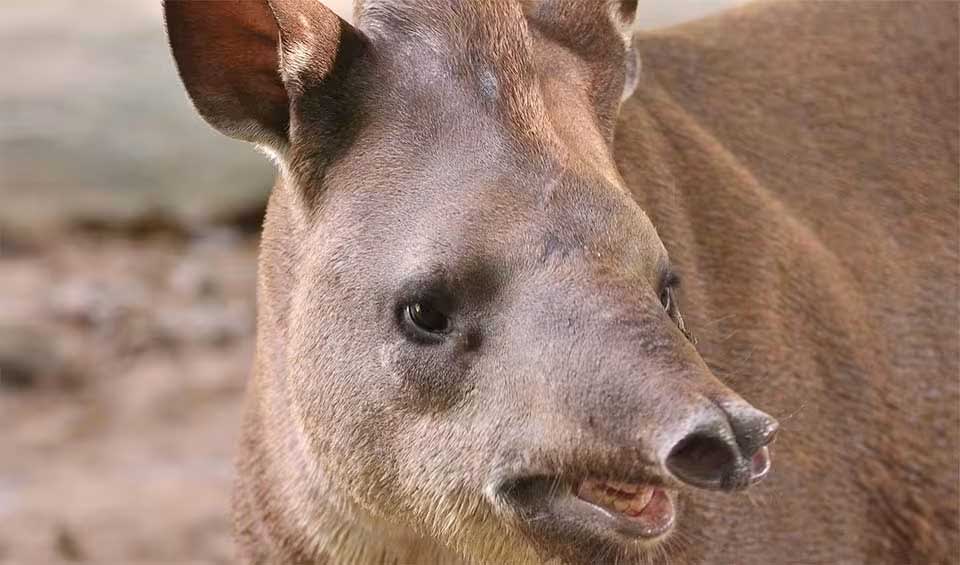Tapirus- American tapirs
Found only in Central and South America, members in this genus are highly threatened due to hunting, poaching, and habitat loss
American tapirs are characterized by their reclusive nature and remarkable adaptability, which enable them to thrive in diverse ecological niches. Despite their large size, making them one of the largest terrestrial mammals in their range, they are incredibly shy and elusive. Their natural instinct to flee from danger is complemented by an exceptional ability to navigate through their habitats. When threatened, these tapirs often retreat to water, where they can remain submerged for several minutes, using their elongated, flexible snouts like snorkels to breathe. This behavior underscores their proficiency as swimmers and their reliance on aquatic environments as a refuge from predators and human disturbance.
Solitary by nature, American tapirs may also form small family units, particularly during breeding seasons or while rearing young. They communicate and establish territories through scent marking, employing methods such as urinating and defecating at specific sites. These territories are defended vigorously against intruders, ensuring that each tapir or tapir family has access to sufficient resources to survive. Their diet is strictly herbivorous, consisting of fruits, leaves, and twigs, which makes them pivotal seed dispersers within their ecosystems. By consuming fruits and excreting the seeds in different locations, they facilitate the regeneration and spread of many forest plants, contributing to the health and diversity of their habitats.
Despite their ecological importance, all species of American tapirs face significant threats from habitat loss, excessive hunting, and poaching. The expansion of agriculture, logging, and infrastructure development has led to the fragmentation and degradation of their natural habitats, severely impacting their populations. Hunting and poaching, often driven by the demand for meat and body parts used in traditional medicine, further exacerbate the pressures on these species. Consequently, all Tapirus species are classified as vulnerable or endangered by the International Union for Conservation of Nature (IUCN).
Species in this genus
Mountain tapir
The only tapir species found exclusively in the mountains
Brazilian tapir
Flee and dive into the water when facing a predator and remain deep under the water until the predator leaves
Kabomani tapir
The smallest tapir species in the world, once considered subspecies of the Brazilian tapir



